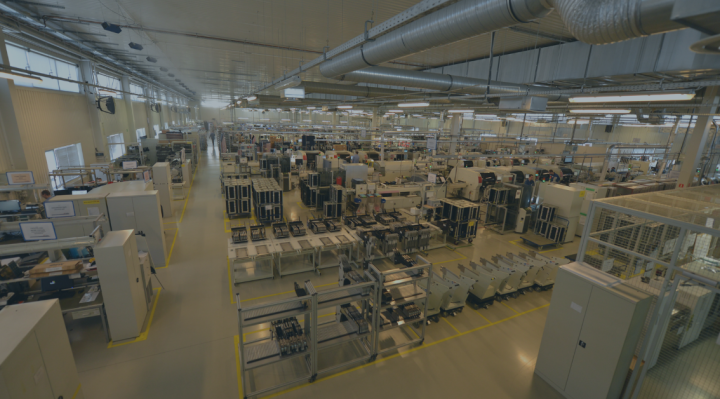All electronic products are exposed to a number of hazards and conditions during use, such as temperature, which can lead to damage or destruction of PCBA. This especially applies to specialized circuits operating in difficult conditions – PCBA assemblies used in industry or mining are exposed not only to a wide range of temperatures, but also to vibrations, dust and chemicals. Therefore, if they are not properly protected, they can be easily damaged.
This is why proper protection of PCBAs against hazards is a very important stage of electronics production. Especially as it is also a guarantee of long, trouble-free product operation.
Conformal coating and potting. A difficult choice
When choosing the PCBA protection method it is necessary to consider the intended use of the device and the conditions under which it will operate. These are:
- The degree of protection required by the OEM
- The construction of the device in which the PCBA assembly will be used
- Is conformal coating/potting intended as the primary protection against environmental factors?
Organic polymers are used during the conformal coating and potting of PCBA, which provide electrical insulation as well as thermal and chemical resistance of the board. However, the level of protection they provide is different. Therefore, Contract Electronic Manufacturing (CEM) providers seeking to meet OEM requirements are constantly faced with the dilemma: conformal coating or potting of PCBAs?
It should also be remembered that regardless of the chosen PCBA protection method, the cleanliness of the board/circuit prior to conformal coating/potting is important, as these processes lead to the trapping of impurities.
Conformal coating
Conformal coating is one of the basic methods of protecting PCBA by applying a dielectric layer, a non-conductive material of 25 to 250 micrometers thick on the assembly depending on the degree of protection required.
Acrylic, epoxy, urethane/polyurethane, silicone resins, poly-para-xylene C, D, N (parylene) and amorphous fluoropolymer are used for PCBA conformal coating.
In most cases, the applied coating is transparent, allowing easy identification of the coated components and, if necessary, modification of the assembly. In addition, the coating may have a UV marker for easy inspection.
Advantages of conformal coating:
conformal coating is an inexpensive method of securing PCBA assemblies
- avoids the use of an additional casing
- ensures long life of the PCBA
- slightly increases the weight of the product
- ensures flexibility of the board and does not overload the components
Disadvantages of conformal coating:
However, conformal coating does not protect PCBA as well as potting does. On top of that:
- it can make it more difficult to reprocess PCBA
- some materials/ solvents used during conformal coating contain harmful volatile organic compounds
When conformal coating, one must also be careful about the reaction of the tin flux with the applied coating, because the varnish may not cure and protect the PCBA as intended.
Potting
A second, much more effective method of protecting PCBA assemblies from external damage and environmental conditions is a PCBA sealing, sometimes referred to as potting. Its purpose, as the name suggests, is to pot the PCBA together with the casing with a thick layer of resin to protect the assembly against physical shocks, chemical substances and to provide excellent electrical properties.
The resin used for potting PCBA is usually dark, which makes it impossible to see the components installed on the board. The resin is mixed with the hardener before application, so it cures to the form of a cross-linked polymer.
To increase the efficiency of the process, the potting resins contain mineral fillers and have a much higher viscosity. Most resins are designed to cure at room temperature and, importantly, do not contain volatile organic compounds. Therefore, there is no need for additional painting of printed circuit boards.
The layer of resin used to potting the PCBA assembly may be as thin as 0.5 mm. However, it is usually much thicker. Unfortunately, as the thickness of the protective layer increases, so does its weight, resulting in a higher cost of creating the coating. On the other hand, a thicker protective layer allows the PCBA components to be better protected.
In addition, when potting, the product is potted along with the casing, which means that the product design has to be prepared accordingly.
Advantages of potting:
- potting provides better protection against damage and environmental conditions than conformal coating
- this method allows for easy application of the protective layer over a large area
- the protective layer perfectly dissipates heat and provides higher protection efficiency of the PCBA in industrial environments
- on the other hand, a thick layer of resin makes access to the product difficult, which can be both a disadvantage and an advantage as it prevents engineering changes, but also protects intellectual property from possible copying.
Disadvantages of potting:
- more expensive method than conformal coating
- significantly increases the weight of the product
- makes inspection and modification of the PCBA more difficult
- more complex application process
However, the choice of PCBA protection method should not be based on which method is better or worse. The decisive factor should be the needs of the specific project and the OEM.
Which method to choose?
When choosing a method of protection, the components used for the production of PCBA, their layout and the expected operating conditions should be taken into account. Therefore, when choosing a PCBA protection method, you should take into account:
- conditions for the use of PCBA, e.g. conditions during the production process
- PCBA design and configuration
- whether the device/casing of the PCBA will provide additional protection against environmental factors, and
- other OEM requirements.
If the product will be used in highly polluted places (e.g. power plants, factories or mines), potting will be of course a better option. It will ensure higher durability of PCBA and avoid the use of additional PCBA protection. Higher durability is also beneficial in high-volume and high-throughput production environments, where the protection layer of the PCBA may be exposed to scratching or abrasion.
On the other hand, potting of the PCBA means a significant increase in weight and can make it difficult to meet other OEM requirements.
Conversely, for everyday electronic devices where low weight and flexibility are important, conformal coating will be a better option. This is an ideal method for protecting sensitive components and devices where product size or shape are critical. Due to the light and thin protective layer, conformal coating is used as standard for smartphones and other personal electronic devices.
As you can see, both conformal coating and potting are complex processes and choosing the right method requires taking into account many factors which, in turn, have a direct impact on cost, effectiveness of protection and lead time.
In addition, the choice of protection method depends on whether the components used in the PCBA are designed for the conformal coating/potting process. This decision is already made by the OEM at the stage of selecting the used components and therefore, de facto, it is the OEM who decides between conformal coating and potting at the product design stage.
However, it should be remembered that the decision on the method of PCBA protection is a serious issue. If the wrong method is chosen or the wrong materials are used, it could jeopardize not only the PCBA itself, but also the entire design and the reputation of the OEM.
That is why it is so important to work with an appropriate and competent contractual EMS service provider, who will not only help you choose the right protection method suited to the requirements of each project, budget and schedule, but also provide help and advice on many other issues.






